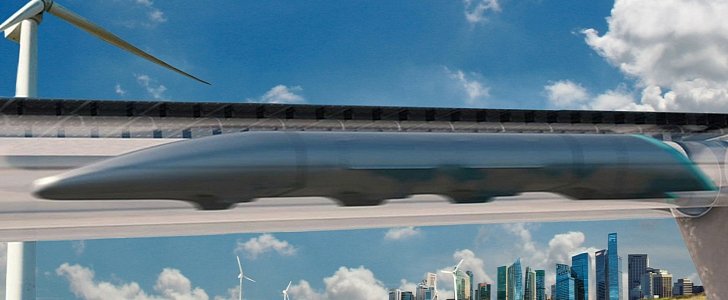For quite some time, humanity hasn’t really invented anything new in terms of transportation. Sure, our trains go faster and faster and so do our cars, while the commercial planes get larger and more efficient, but the principle remains the same.
Hyperloop would be a completely new means of getting from A to B, and provided the tickets don’t have a prohibitive price, it will also be one of the most efficient. Why? Because it would mean traveling on the ground (well, close to it at least) at speeds just shy of that of the sound. In other words, a lot faster than what the current airliners are offering.
Given all the publicity Elon Musk is enjoying lately, you’ve probably heard of Hyperloop, one of the three main ideas that Tesla Motors’ CEO has had: a real eco-friendly alternative to the classic automobile (Tesla), space exploration (Space X) and a new, faster and more efficient way of long-distance transport (Hyperloop).
Unlike the other two enterprises where he’s still actively involved, Elon Musk only came with the idea for this third one, allowing a different company to take over and see that it’s put into practice. It’s called Hyperloop Transportation Technologies, and it has just announced it filed a request for building the first full-scale hyperloop.
Speaking to CNBC in Davos, Bibop Gresta, Hyperloop Transportation Technologies’ COO even gave a timeline: "In 36 months we will have the first passenger in the first full-scale hyperloop,” he said. If everything goes according to plan, construction of the five-mile long track in Quay Valley, California, should begin in the second quarter of this year, with the final deadline set for 2018.
Gresta says that we’d still have to wait for about five years until we can hope to see the first real hyperloop track linking two or more cities and allowing people and goods to be moved between them at speeds of up to 750 mph (1,207 km/h). But the worst part is that, due to legal issues, the first such itinerary will most likely not be built on US soil, so people over here will have to wait for even longer until they can beat the speed of airplanes without lifting more than a few feet off the ground.
Given all the publicity Elon Musk is enjoying lately, you’ve probably heard of Hyperloop, one of the three main ideas that Tesla Motors’ CEO has had: a real eco-friendly alternative to the classic automobile (Tesla), space exploration (Space X) and a new, faster and more efficient way of long-distance transport (Hyperloop).
Unlike the other two enterprises where he’s still actively involved, Elon Musk only came with the idea for this third one, allowing a different company to take over and see that it’s put into practice. It’s called Hyperloop Transportation Technologies, and it has just announced it filed a request for building the first full-scale hyperloop.
Speaking to CNBC in Davos, Bibop Gresta, Hyperloop Transportation Technologies’ COO even gave a timeline: "In 36 months we will have the first passenger in the first full-scale hyperloop,” he said. If everything goes according to plan, construction of the five-mile long track in Quay Valley, California, should begin in the second quarter of this year, with the final deadline set for 2018.
Gresta says that we’d still have to wait for about five years until we can hope to see the first real hyperloop track linking two or more cities and allowing people and goods to be moved between them at speeds of up to 750 mph (1,207 km/h). But the worst part is that, due to legal issues, the first such itinerary will most likely not be built on US soil, so people over here will have to wait for even longer until they can beat the speed of airplanes without lifting more than a few feet off the ground.

